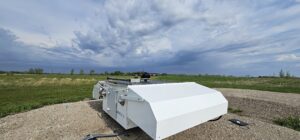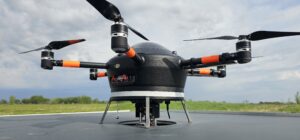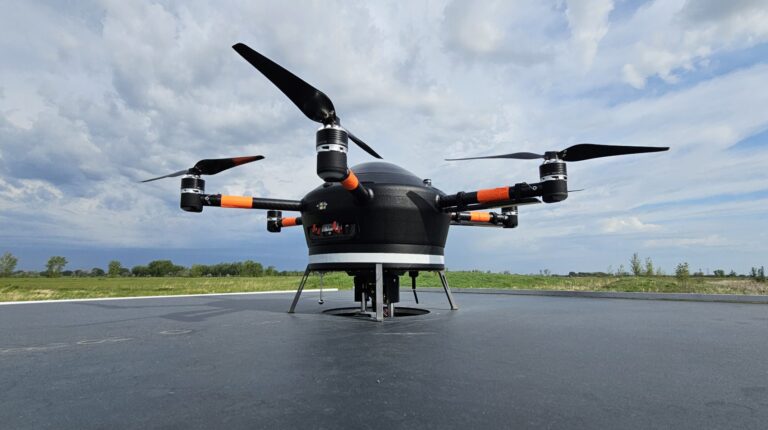NOAA’s National Weather Service and Grand Sky Airfield Operations have signed a two-year Cooperative Research and Development Agreement to deploy uncrewed aircraft systems (UAS) to gather and evaluate the upper air data to determine how it could aid in weather forecasting.
NOAA’s National Weather Service research project
The research project will take place at the Grand Sky Flight Operations Center in Grand Forks, North Dakota, and will gather weather data up to an altitude of 5,151m.

The research project will study the effectiveness of deploying unmanned aircraft systems in the weather observation role; evaluate if the observations gathered are useful to NOAA stakeholders and meet NOAA’s mission; and evaluate whether the observations gathered enhance situational awareness in support of existing NOAA weather forecast operations.
“Additional observations in the atmospheric boundary layer, at many vertical points above Earth’s surface, are key to improving the skill of National Weather Service forecasts and warnings,” said Curtis Marshall, lead for the commercial data program at NOAA’s National Weather Service. “We are exploring commercial sources to improve our observing systems footprint and, through this partnership, we hope to leverage a new way to gather the observations we need.”
Remotely controlled weather observation
Operated by Grand Sky, Meteomatics Meteodrones are remotely controlled mobile weather observation collection aircraft that provide near-real-time, high-altitude atmospheric measurements. Each Meteodrone will fly into the boundary layer of Earth’s atmosphere, gathering atmospheric data such as temperature, pressure, humidity, wind conditions and detection of icing conditions and accumulations.
The partners say that, similar to radiosonde probes flown on weather balloons, Meteodrones provide an alternative method to observe weather conditions in the lower to medium regions of the atmosphere. UAS operators can launch and recover the drones in rapid succession.
“As the first large-scale commercial UAS test park in the nation, we are committed to providing our aircrews with the most accurate weather information possible,” said Tom Swoyer, president of Grand Sky. “We are excited to expand our partnerships to continue researching how UAS-enabled weather collection tools can contribute to refined weather awareness across the National Airspace System.”
“Synoptic is proud to participate in this cooperative research agreement studying the value of forecasting,” said Elizabeth Wilson, director of weather programs at Synoptic. “As the primary data repository for this effort, Synoptic will be storing and delivering this high-quality, low-latency data to the National Weather Service in near real time, allowing for a more effective and centralized process for data validation. We’re looking forward to the outcomes and are excited to be at the forefront of these efforts.”
Martin Fengler, CEO and founder of Meteomatics, commented, “Meteodrones significantly enhance the accuracy of weather forecasts by filling critical observation gaps in the lower and mid-atmospheric boundary layer, offering precise, high-resolution data that revolutionizes our ability to predict severe local weather phenomena. Thus, we are very excited to be part of this forward-looking project and to work with great partners on the future of advanced weather forecasting.”
In related news, at the Open Technology Forum at Meteorological Technology World Expo 2023, Ruud Dirksen, head of the Global Reference Upper Air Network (GRUAN) Lead Centre at Deutscher Wetterdienst, and Frédéric Vogt, scientific collaborator at MeteoSwiss, revealed the results and conclusions from the WMO’s Upper Air Instrument Intercomparison 2022 (UAII2022). Click here to read the full story.



